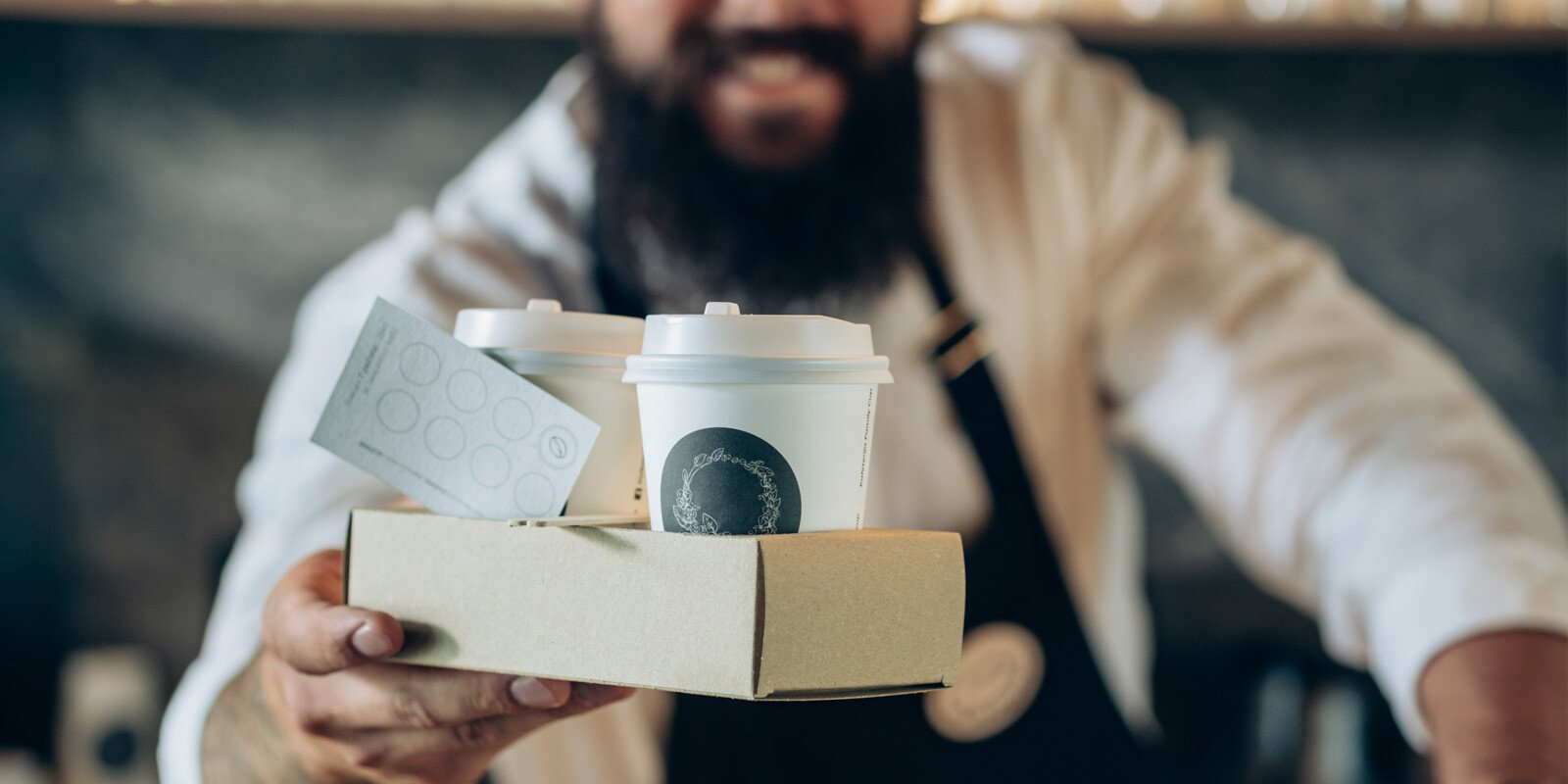Not got time to read? Listen instead with our audio version
Do you have a 'usual?'
Buying from a business that knows your 'usual' is comforting. It's getting 'the usual' coffee order at your favourite coffee shop, or having your supermarket shopping already pre-packed with a repeat order.
And often, this 'usual' isn't a wholly conscious decision. If a business is ticking all the right boxes to suit your needs, 'the usual' cuts above the competition by default.
Becoming a loyal customer of a particular brand is comfortable. Giving our money to a company we know and trust softens the financial blow and justifies the actual spending. It detracts from the actual spending and rather focuses on the gains.
And of course, it's good for business too.
No matter what a business sells, no matter the industry - returning loyal customers is like hitting the bullseye of sales, and any and all businesses can benefit from a loyalty reward scheme.
Points make prizes, for everyone
Loyal customers are what keep a business operating. Loyal customers, (particularly for small businesses,) are going to be the bread and butter of marketing, particularly when it comes to word of mouth.
Because regular clients bring a promise of continued business.
Not only does gaining loyalty retain your customers and solidify a guarantee of future sales, it builds a stronger relationship.
Of course, 10/10 service and a great product will retain loyalty. But another way of hooking loyalty is introducing a loyalty reward scheme.
The ultimate client retention strategy
Loyalty reward programmes are a great way of reducing customer churn and keeping hold of high-value clients.
So how does it work? Let's pick apart the physics of a loyalty reward scheme.
Essentially, the repetition of a purchase provides a heavier incentive for your customer to repeat a purchase.
Upon these repeated purchases, your customer gains more familiarity with your brand, business and service. These are the bricks of familiarity, the foundations of solid loyalty.
If these sales are repeated, then your customer gains 'points' to receive a reward. Why would they ever switch to a competitor when they've had nothing but good experiences, and a reward at the end?
Fast forward time, and several repeated purchases. Eventually, your customer isn't in it for the reward anymore. They just keep coming back, and you've built loyalty.
We're far more likely to stick to what we know. It's how we develop a favourite pub, a favourite brand of clothing, a favourite mechanic. We give them our business not only because it's a product we like, but because it becomes familiar.
Builds loyalty through familiarity. Your customers are familiarised with your business so much that they aren't just in it for the reward anymore.
Essentially, loyalty schemes have the power to transform a one-time buyer into a high-value returning client.
A mutually beneficial sales strategy
For a loyalty scheme to hit, it needs to be beneficial for everyone.
For a business, it should be worth the time, energy, effort and investment into the loss of your product/discount. And for the customer, it needs to feel like they're getting a high-value reward in exchange for their loyalty to the company.
Pros for the business:
- It prevents customers from shopping with your competitors because they've invested in spending with you
- Opens up a window of opportunity for you to create something unique and memorable
- Increases brand awareness
- Increases familiarity between customers and business to build a solid foundation
- A promise of continued business is pre-locked in
Pros for the customer:
- Getting a reward
- Gaining extra discounts and saving money in the long term
- Getting an individual personalised experience
- Deepens familiarity with the product
Attach high value to your reward
No one wants an unappealing or low-value reward. To make your reward truly 'rewarding,' make it high value. It's like spending £1000 on a new laptop only to be rewarded with a Happy Meal toy.
Put the 'reward' in rewarding. For a reward to hit, it has to be high-value and worth it.
This gives your customer something to come back for and incentivises a repeat spend.
The better the reward scheme, the more 'delighted' your customers are. Loyal customers are more likely to tell their friends about your brand. They'll be your biggest fans, and therefore the best source of organic, word-of-mouth marketing.
No two reward schemes were made the same
All reward schemes are different, per business.
These schemes not only encourage repeat purchases but also strengthen the relationship between the customer and the brand.
Types of customer loyalty schemes include...
- Visit schemes for smaller purchases
- Spend programmes for less frequent purchases
- Item-based rewards
- Category based rewards
- Referrals
Visit schemes for smaller purchases
These reward customers after a certain number of visits. Think of 'high frequency' purchases, where there will always be space in the market for common buys (like a coffee shop or a salon, where you might collect stamps following each purchase).
Example: Cafe Nero's digital coffee stamp
Spend programs for less frequent purchases
This loyalty scheme is for a slightly longer sale cycle. Customers part with larger quantities of money, over shorter amounts of time. Customers earn points for every pound spent, which can be redeemed for discounts or gifts.
Example: Tesco Clubcard or Sainsbury's Nectar Points
Item-based rewards
Customers are rewarded with an item after achieving the reward and passing the spend threshold. This is suitable for businesses with a diverse variety of products, like retail stores. An example would be buying ten products and getting one free of choice.
Example: Boots offer 'free' products if you buy into promotional deals on their own branded products, like '3 for 2 on No.7 and get a free goodie bag'.
Category based rewards
Rewards are linked to specific product categories. This works well for businesses with distinct product lines, with differing buyer personas for each one. Customers accumulate points for each purchase in a particular category.
Example: John Lewis offer exclusive access to events, competitions, money off certain ranges, also a free coffee and cake.
Referrals
A loyal customer who gets a reward for referring a friend. Often a beneficial loyalty incentive which not only rewards the loyal customer, but their friends too. This attracts new business and builds a kind of 'snowball effect' that builds a wider client pool.
Example: Monzo giving £5 to each new customer and friend who referred Monzo, or gyms offering discounts or free sessions for friend referrals.
Which scheme is the right one for your business?
All businesses want to achieve growth in the form of loyal customers. But how do you choose the right one for your business?
Choose a loyalty scheme that aligns with your ultimate goals as a business. Which scheme is the right fit for your specific product or service?
Consider spend frequency, and whether you'll need categorised rewards for different buyer personas.
Outline the cost/benefit ratios, and identify how you'll build a long-lasting relationship with your customers.
Visualise the different loyalty scheme options, and try them out. You might try a couple of different programs until you find a loyalty scheme that fits like a glove.
Ultimately, choose a scheme which shows your customers that your offerings go beyond business: you want to show them you genuinely care about their needs and savings. Tapping into the correct buy-reward balance is the epicentre of loyalty, and it could see your sales skyrocket.
After all, getting the right loyalty scheme could be the difference between a one-time buyer, and a forever customer.




